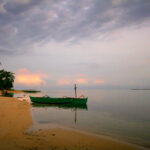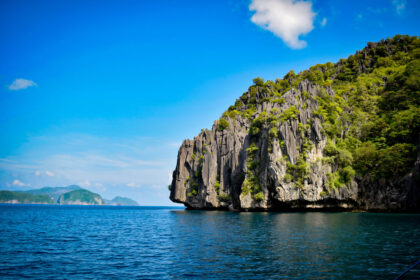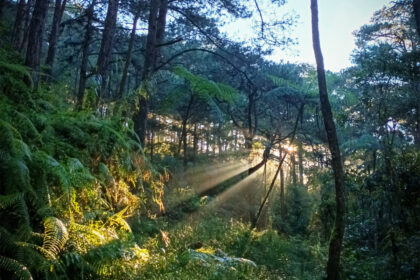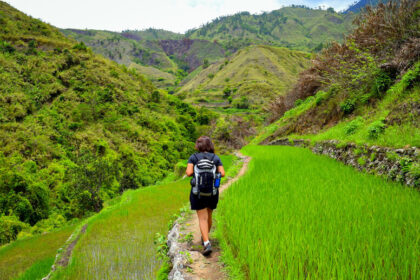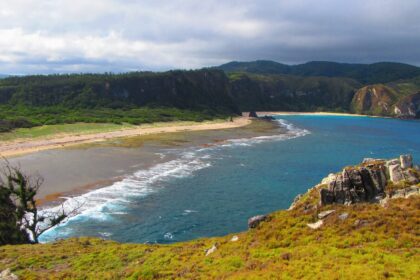“I can’t do this anymore,” I thought, puffing oxygen from a can. It was a cold, harsh dawn. The pain on my hip and spine from carrying a 16-kilogram toddler grew monstrous by the minute as we trekked the muddy eight-kilometer Ambangeg Trail to Mount Pulag’s summit.
We had high hopes that March morning. The day before, sunlight, though short-lived, slivered through thick fog after weeks of torrential rains and close-to-zero-degree temperatures in Babadak, Benguet – home to Mount Pulag. Constellations – rosaries, bears, and lions – appeared after a long celestial drought. On a mountain that’s believed by the indigenous Ibaloi to be the playground of the gods, these were signs that the gods were sending us off on a beautiful and sunny trek.
We left our homestay, 10 minutes north of the Ranger Station where most treks begin, a few minutes past 2 am. The first hour saw us brisk and brimming with hope as we walked on a gentle, straightforward path that one might imagine to be boring in daylight. Lia slept peacefully in her carrier all the way to Camp 1, where, under the moon and stars, we huddled with other hikers – a few of them bawling, ready to throw in the towel- and to the endless abyss of the famous Mossy Forest. By then, every single one had overtaken us.
From where we were in the deciduous forest, hundred-year-old trees swallowed everything in their deep, dark bellies: the moon’s faint light, warmth, human will. We found ourselves in pitch-black darkness, beneath the sound of breath, insects, and wind.
I slumped on tree barks and moss-covered rocks, cold yet sweaty from beanie to sock, watching white mist escape from my mouth into thin air. The balmy wind seeped through layers of polyester, wool, and fleece, swathing every nerve and bone.
I dreamed of scaling Pulag long before I became a mother. We trained, trekking hills no less than five kilometers every week for months. Still, the brunt of climbing a high-altitude mountain against five hours of wintry air, with little oxygen and constant, piercing pain, proved unbearable.
Doubts flirted with my thoughts until a large, brown butterfly perched on my coat for half an hour. Follow where the light leads, it hummed. So followed, I did. Step, step, step, sit. Step, step, step, sit.
Four hours flew by, and night gave way to daylight. The trees receded, revealing soft tinges of tangerine above us. From a distance, a sign read: Camp 2 Grassland Summit. I ran feverishly toward it, laughing and teary with joy as I combed my fingers through the last strands of leaves in the forest.
The boundless breadth of the Cordillera mountains, capped with dwarf bamboos, all bathing in the sun’s golden rays, filled the cerulean sky. I unbuckled the carrier and placed my sleeping daughter on my lap. “We are finally here, Lia, living a dream.” Tears of happiness trickled down.
Over hot coffee and instant noodles, we watched a sea of clouds rise above the mountains. 7:20 am, my watch reads. The last of 500 hikers to make it to one of five summits (we were assigned Peak 5, or the Tower Summit), we missed Pulag’s famous sunrise vista. But it didn’t matter. Others make it to the mountain many times without witnessing a sea of clouds or even good weather. Like the gods that guard it, it is fickle and has a mind of its own. It commands. We simply surrender to it.
Clutching my daughter’s tiny fingers, the glow of daylight felt like redemption, and we breathed in the mountain in a starkly different way. Strangers on the trail beamed with happiness for Lia, the second youngest trekker that day, as she trod the trail back.
Experiencing Mount Pulag is pure magic: the crisp scent of trees and crimson flowers, clouds floating across your feet, mossy strings hanging from century-old barks, and pine-fringed cliffs. For some, the magic stems from the thrill of numbers, of reaching the Philippines’ third-highest mountain.
But for me, the magic was simply being up there: a place where the sun gives birth to its first rays, a place where dreams come to life, a place where the gods play.







